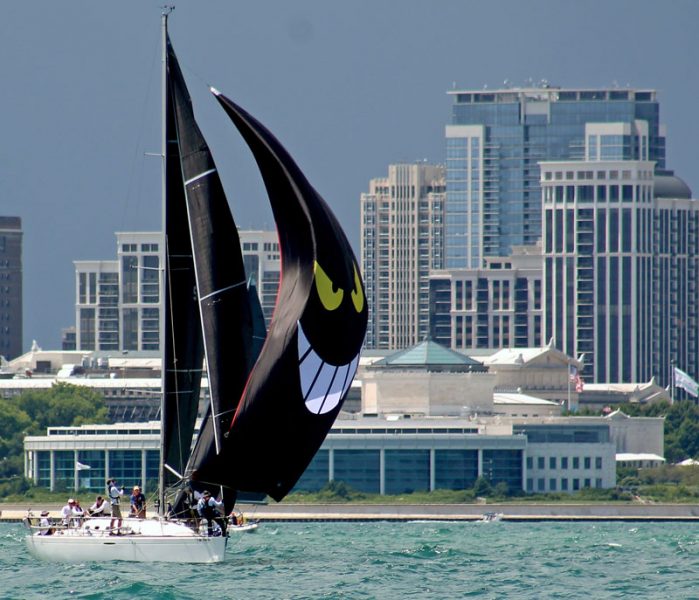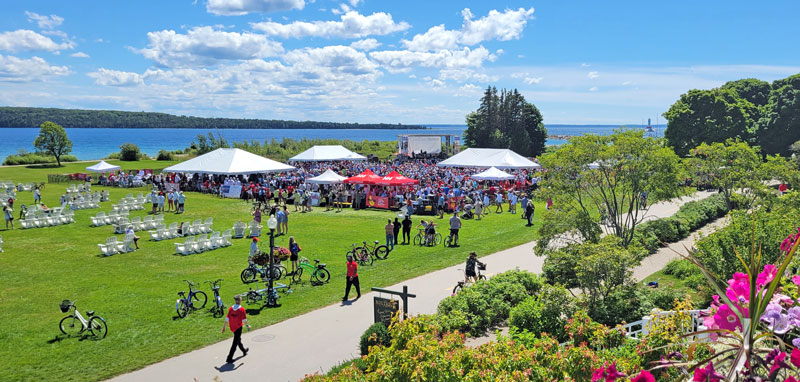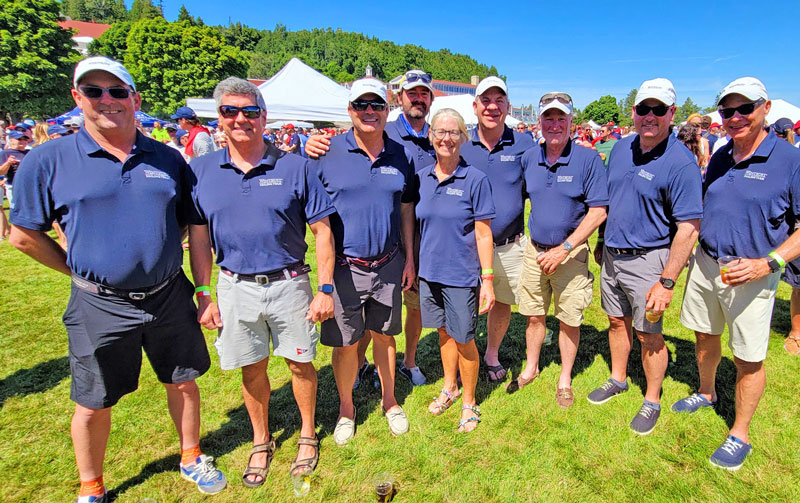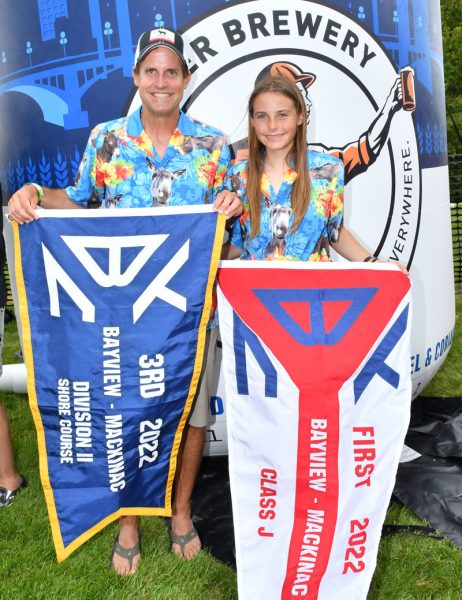
Wet, Wild and Windy Chicago to Mackinac Race
Lightning and Fury in Chicago to Mackinac Race
You could say that no one predicted what happened in the wet, windy and wild Chicago to Mackinac Race presented by Wintrust, but that’s not true.
Longtime weather guru Chris Bedford was spot-on. Whether you believed it or not in the pre-race briefings, the squall cells that eventually showed up arrived with a fury in a hurry, hovering over lower Lake Michigan for almost 10 hours while pounding the fleet relentlessly.
With it came 60+ mph sustained winds, rain, hail and more furious lightning than anyone, even the old goats, can remember, with all thunder and fury. Out of 240 boats at the start, only one was struck by lightning; 29 dropped out.

The Chicago Yacht Club’s 113th Race to Mackinac adherence to and leadership on safety protocols and preparation was a major asset to the crews out on the water, who saw enough typhoon-like conditions in one night to last a lifetime.
“I have not seen a crazier show, more lightning than I have ever seen,” exclaimed Jack Howard on the J/120 Jahazi. “It was really relentless, and it was something we haven’t seen in a while,”
Shortly before nightfall, as the boats made their way northward, the first set of squalls hit the fleet with winds seemingly materializing from nowhere, ramping up to hurricane force, with little or no place for boats to hide.
This video was shot by Jeremy Appel of Lafayette, CA, who was sailing aboard Hiwassee, a Farr 395. ©Race to Mackinac Presented by Wintrust
The Chicago to Mackinac Race started in 1898 with a mere five boats. The Mac has evolved into a world-class sporting event. At 289.4 miles, the Race to Mackinac is the oldest annual freshwater distance race in the world. The Mac starts at the Chicago Lighthouse, just off Navy Pier, and continues to Mackinac Island, Michigan.
Mackinac, sometimes called the Monte Carlo of the Midwest, with its horses, fudge and cool breezes, thrives. It lives and breathes for this, and the island’s residents and visitors (fudgies) wouldn’t have it any other way.

Marin County Team in Chi-Mac
Presenting partner Wintrust Bank not only provides a solid sponsorship off the water, but was represented on it when vice chairman and chief lending officer Richard Murphy sailed with the company’s first sponsored boat. Murphy, Nick Gibbens (from San Rafael) and David Normandin chartered Mojo, a Beneteau 40.7, and brought in a seasoned crew partly from Northern California. They won their division after surviving a collision at the start.
Gibbens was born and raised in Bay Area. He grew up in Berkeley and has been sailing on San Francisco Bay all his life. In this, his first Mackinac Race, his trusted longtime sailing companions included Dave Gruver and John Collins, both of Mill Valley, and Doug Johnstone from Marina del Rey. “He is a surveyor by trade and he was our navigator, weather strategist and all-over strategic guru,” said Gibbens of Johnstone.

The crew and boat had only been together for a few days before the race and earned a section win in the Beneteau 40.7 class.
Two Races to Mackinac, Two Daughters
The story last week during the Port Huron to Mackinac Race of Merritt and Scott Sellers, father and daughter, is inspiring and heart-lifting.
They sailed their J/111 nosurprise on the Shore Course, winning the doublehanded class and eventually finishing third overall. They’re from Larkspur and keep a summer home in Harbor Springs, Michigan.

Scott’s daughter Hannah had done the last two Bayviews aboard their J/111, and Merritt did Chicago last year. “I’m going to swap out and have a different daughter and a different experience,” said Scott.
The Sellers’ team finished first in the J/111 Division and 26th overall on arrival to Mackinac in 1 day, 12 hours, 38 minutes. This was Hannah’s first Chicago race. She primarily trims sails on board.
“It was pretty gnarly,” said Hannah Sellers. “It was one of the most intense storms I’ve ever seen, but it felt really exciting to race through that. It was pretty chilly on the boat!”
The first night’s storms wrecked sailors’ nerves, but the fleet’s consensus was that all the safety preparation, practice and pre-set plans came into effect. Natalie J’s owner Philip O’Neil III said, “We expect storms in the summer here in the Midwest.” O’Neil’s TP52 was the first race boat to finish Sunday at 6:17:53 EDT.
“We took our main down when it hit 40 knots. We saw 69 knots at one point. The team had already talked through the scenarios, so when it happened everyone knew what their job was. It was a big deal, but it wasn’t a big deal; everyone jumped in and did what they planned on doing. When it was over, we got back to racing,” said O’Neil.
While this year’s race didn’t break any official records other than the number of Lake Michigan lightning strikes during Saturday night’s storms, it was one of the overall fastest races in recent years.

I grew up sailing on the Chesapeake Bay which has almost nightly lighting storms in the summer. Few sailboats get struck. In the Mac there were 240 boats whose masts were the tallest things around–1 got struck.
Does anyone know why lighting seems to strike sailboats so infrequently?